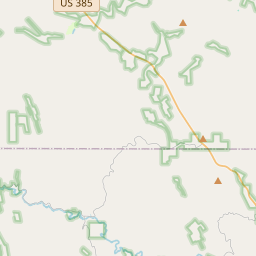Civilian Conservation Corps Camp
Historical marker location:






- March 31, 1933: President Franklin D. Roosevelt signs the Emergency Conservation Work (ECW) Act into law, establishing the Civilian Conservation Corps as part of his New Deal program.
- April 5, 1933: The CCC is officially launched, providing employment opportunities for unemployed young men between the ages of 18 and 25.
- 1933-1942: The CCC enrolls over 2.5 million young men from economically disadvantaged families, providing them with jobs, vocational training, and relief during the Great Depression.
Camp Life: CCC enrollees live in camps located in rural areas and work on various conservation projects across the United States. They receive food, shelter, clothing, and a small wage, with a portion of their earnings sent back home to support their families.
Conservation Projects: The CCC undertakes a wide range of conservation projects, including reforestation, erosion control, trail construction, forest fire prevention, wildlife conservation, historic site restoration, and the development of public parks.
Collaboration with Other Agencies: The CCC works in collaboration with various federal agencies, including the National Park Service, U.S. Forest Service, Bureau of Land Management, and Soil Conservation Service, to implement conservation programs and projects.
Educational and Vocational Training: In addition to their work, CCC enrollees receive educational and vocational training, such as literacy classes, courses in conservation and forestry, and technical skills development.
Military Training: During World War II, the CCC shifts its focus to providing military training for its enrollees, preparing them for military service.
- July 1, 1942: As the United States transitions into wartime efforts and the economy improves, the CCC gradually loses its significance. The program officially ends with the termination of new enrollments.
The Civilian Conservation Corps played a significant role during the Great Depression, providing employment, relief, and skills training to young men while accomplishing vital conservation work across the country. The program's legacy can still be seen today in the numerous parks, forests, and other public lands that were developed or improved through the efforts of CCC enrollees.
More history nearby
The state capital of South Dakota, Pierre, was named after Pierre Chouteau Jr., a prominent fur trader and founder of the American Fur Company.
The county was officially established on January 11, 1875, with the city of Deadwood serving as the county seat. Deadwood quickly became a thriving and notorious frontier town, attracting gamblers, outlaws, and pioneers. The city's population rapidly grew, and it soon became a center for mining and commerce. Numerous gold mines were established in the area, producing large amounts of gold and silver.
However, Lawrence County faced its fair share of challenges. In 1876, the county experienced the infamous event known as the "Deadwood Gulch Fire," which resulted in the destruction of a significant portion of the town. Despite this setback, Deadwood quickly rebuilt and continued to thrive.
Today, Lawrence County remains an important part of South Dakota's history and economy. It is known for its rich mining heritage and the historic preservation of sites like Mount Moriah Cemetery, which is the final resting place of notable figures such as Wild Bill Hickok and Calamity Jane. The county continues to attract visitors from all over the world who are fascinated by its wild west history and breathtaking landscapes.
Lawrence County Timeline
This timeline provides a glimpse into the major events and milestones that have shaped the history of Lawrence County, South Dakota.
- 1874: Lawrence County is established, named after John Lawrence, a leading citizen and state legislator.
- 1876: Gold is discovered in the Black Hills, leading to a gold rush in the area and the establishment of mining towns like Deadwood and Lead.
- 1877: Deadwood becomes a prominent center for mining and trade, attracting entrepreneurs and notorious figures like Wild Bill Hickok and Calamity Jane.
- 1877-1879: The Black Hills are the site of conflicts between Lakota Sioux Native Americans and the United States government, following the discovery of gold on Native American territory.
- 1883: The Homestake Mine in Lead becomes one of the largest gold mines in the world, attracting thousands of miners and contributing to the growth of Lawrence County.
- 1889: South Dakota becomes a state, with Lawrence County being one of the original counties.
- 1892: The Sturgis Motorcycle Rally begins, bringing thousands of motorcycle enthusiasts and tourists to Lawrence County each year.
- 20th century: The mining industry experiences periods of growth and decline, impacting the economy and population of Lawrence County.
- 1976: The Black Hills Flood devastates many communities in Lawrence County, causing extensive damage and loss of life.
- 21st century: Lawrence County continues to be a hub for outdoor recreational activities, including hiking, biking, fishing, and hunting.